To promote the exchange and sharing of agricultural extension information, several U.S. Land Grant institutions have formed an alliance with 10 Chinese agricultural universities. From June 17 to 22, UC Agriculture & Natural Resources took a group of scientists from Chinese agricultural universities on a tour of agriculture in Northern California.
Extension in China
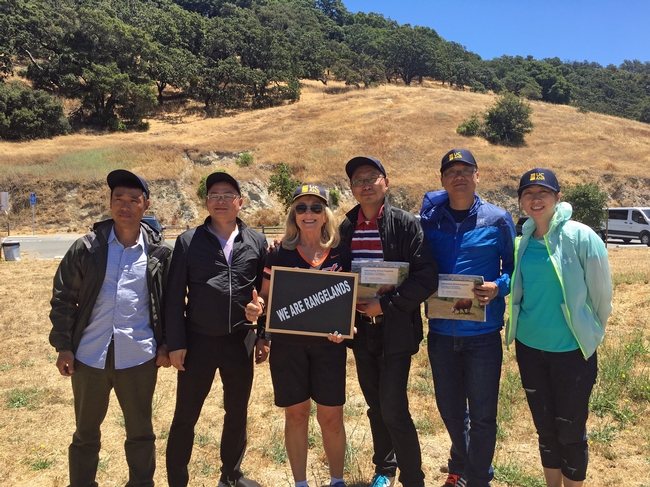
As Anne Megaro, director of governmental and community relations for UC Agriculture & Natural Resources explained “They have extension in China, but it is not like ours. They are looking to strengthen their advisor positions and develop a mechanism for career advancement, similar to what we have in the U.S.”
Visit to Sonoma County
On June 19 and 20, the delegation visited Sonoma County to learn about our Ombudsman, Master Gardener, 4-H and Rangeland programs in Sonoma County. Photos at end of the story.
Agriculture Ombudsman
The evening of June 19, Agriculture Ombudsman, Karen Giovannini, shared how she helps farmers and ranchers navigate permitting and regulations. She explained how, at their most refined, regulations are in place to protect resources, that is, people and the environment. China also has many ‘rules' as the delegates called them. Karen shared locally made sheep, goat and cow cheeses with the delegates as an example of how a dairy operation could expand their product offerings to help them stay viable. Although cheese is not a ‘traditional' product in China, Karen explained that it could be a way to help keep some of the younger generation in rural areas.
China is continuing to experience the largest migration in world history. The rural population is migrating into the urban areas for better pay and opportunities raising concerns about the negative impacts on their agriculture sector and food security. Fun fact, in 2013: “Roughly one out of every 25 people in the world was a resident of a Chinese city who arrived, or was born, since the current round of [Chinese] economic reforms began in 1978.” Like United States, labor shortages in agriculture in China are creating a need for more agriculture technology. By the way, of the delegates that tried the cheeses, their favorite was the goat cheese.
Master Gardener and Bayer Farm Programs
On morning of June 20, Master Gardener Food Gardening Specialists and Jonathan Bravo from Bayer Farm kindly hosted the Chinese delegation. Jonathan, the garden manager, showed the delegation the community garden at Bayer Farm and talked about the programs there and then the FGS team led the delegation through the demonstration garden and discussed the sustainable food gardening principles being shown in the garden, such as integrated pest management and square foot gardening, and discussed their educational outreach programs in the garden. Because so much of China's population lives in the cities, this example of urban farming is of interest to the delegates.
4-H Programs
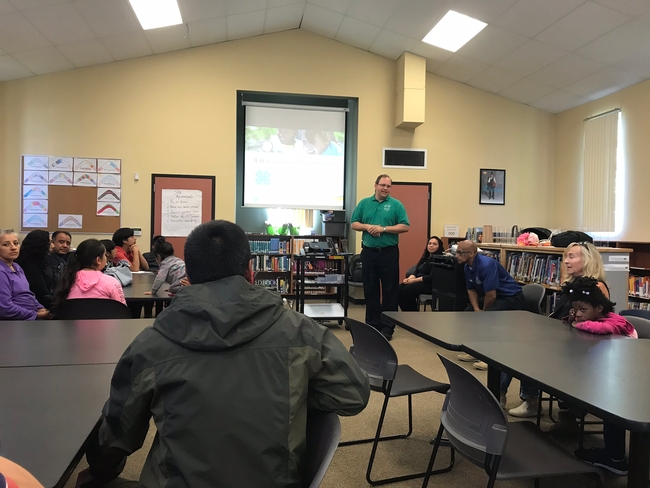
The delegates were also very interested in the bilingual interactions. In China, there are many dialects and it will be important for youth extension programs to reach out to the rural population in their native dialects. The delegation was also quite interested in 4-Hers selling market livestock at the fairs as they observed when visiting Shasta County fair earlier that week.
Rangelands
Final stop in Sonoma County was a visit to Taylor Mountain Regional Park. Dr Stephanie Larson shared the experiences she had with setting up grazing on public lands and the many benefits it provides, including exposing the non-farming community to livestock on working lands. They hiked to one of the educational signs along the trail that UCCE advisors developed, along with videos and fact sheets, to educate the public about the importance of maintaining proper livestock grazing and rancher stewardship on California's rangelands with public access.
Although China has the third largest population of cattle, they import most of their beef to meet the increasing demand due to increasing standard of living of the Chinese people. As recent as 2016, “small farms with 9 or fewer cattle slaughtered per year are responsible for a major portion of Chinese beef production.” Plus, their native cattle breeds far underperform when compared to fast growing beef cattle breeds in the United States and other countries. Developing grazing programs on public park lands in China will keep their heritage alive while producing the many benefits grazers provide. The delegates were fascinated to see the cattle enjoying the grasses.
Next Stop
The delegates loved their visit to Sonoma County. Next stop was UC Davis and the Russell Ranch Sustainable Agriculture Facility, UCD's living laboratory.
Glenda Humiston, VP of UC ANR summed up the visit best, “The Chinese face many of the same issues that we do here in the U.S. The Chinese universities want to improve rural economic development to lift up the quality of life for people in rural communities. They are also responding to global climate change, drought and pests while trying to improve food security and water use efficiency. They see UC Cooperative Extension as an effective research model; we hope that scientific collaborations will accelerate solutions and help maintain relations for California agriculture with China.”
Attached Images:
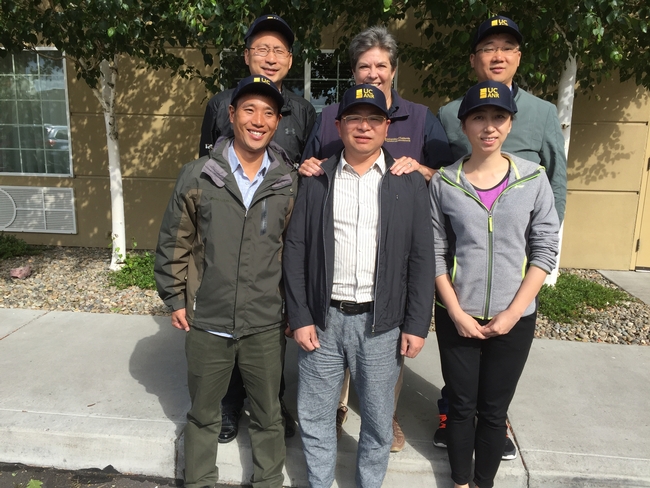
The Chinese Extension Alliance Delegation, with Glenda Humiston: top row Song Hui, New Rural Development Research Institute of Northeast Agricultural University; Glenda; Sun Wenpeng, Northeast Agricultural University; front row He Minghui, Hunan Agricultural University; Luo Jian, Hunan Agricultural University; Li Peng, Office of Invigorating Agriculture with Science and Education in the Department of Science and Technology.
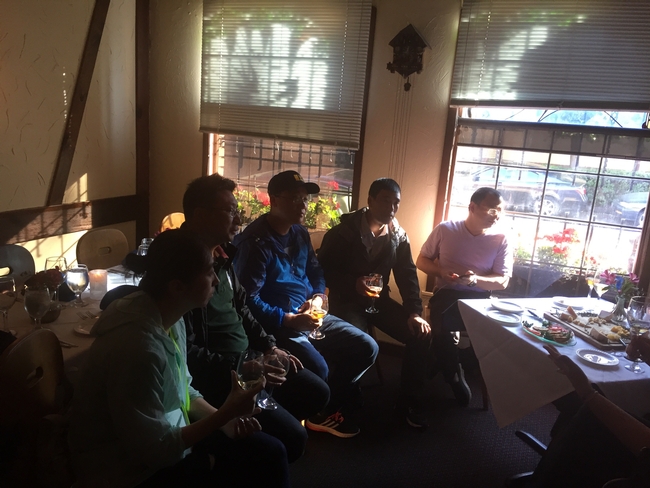
Delegates learning about local cheeses at La Gare French Restaurant in Santa Rosa
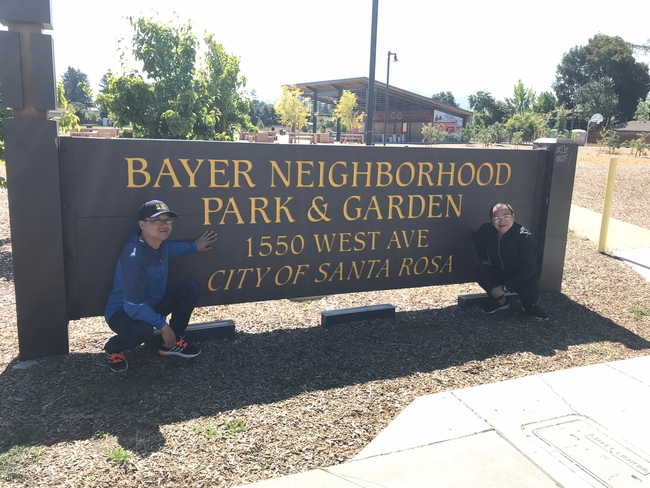
At Bayer Farm in Santa Rosa
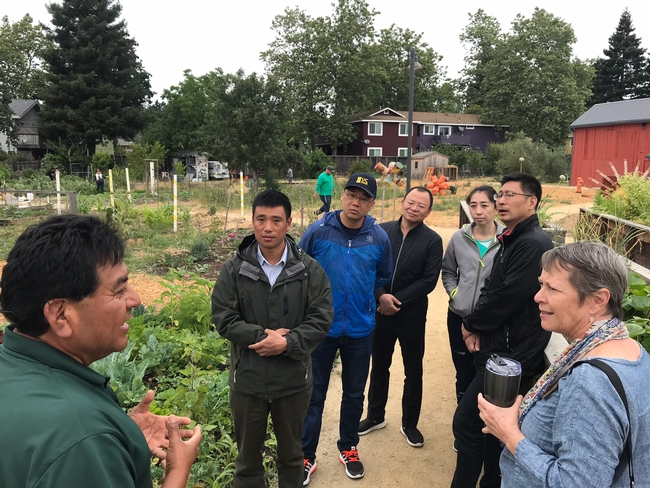
Delegates with Jonathan Bravo and Mimi Enright at Bayer Farm
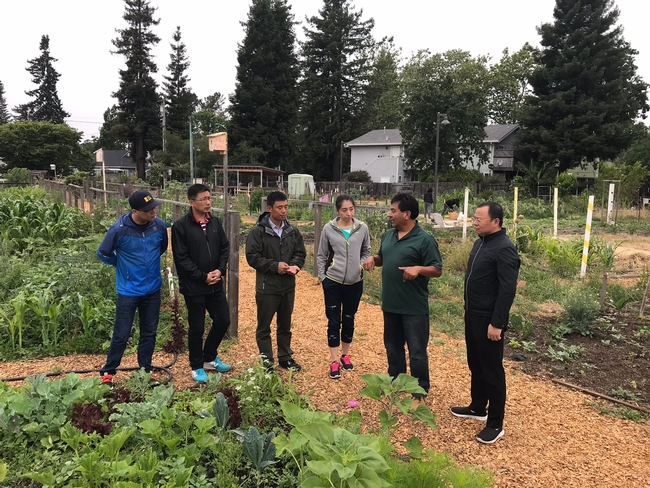
Delegates with Jonathan Bravo at Bayer Farm
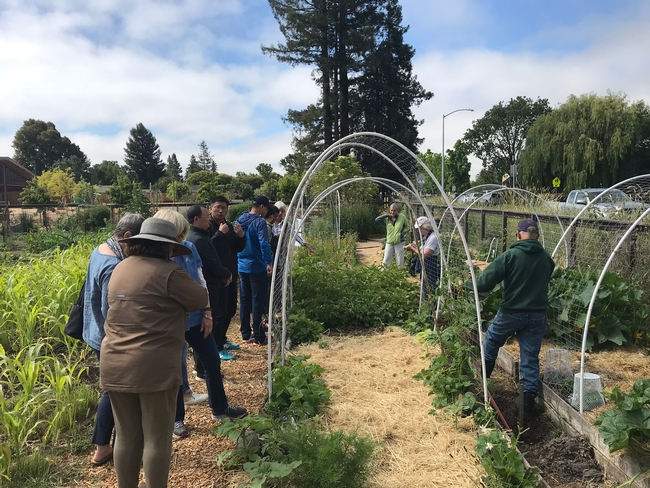
Touring Bayer Farm
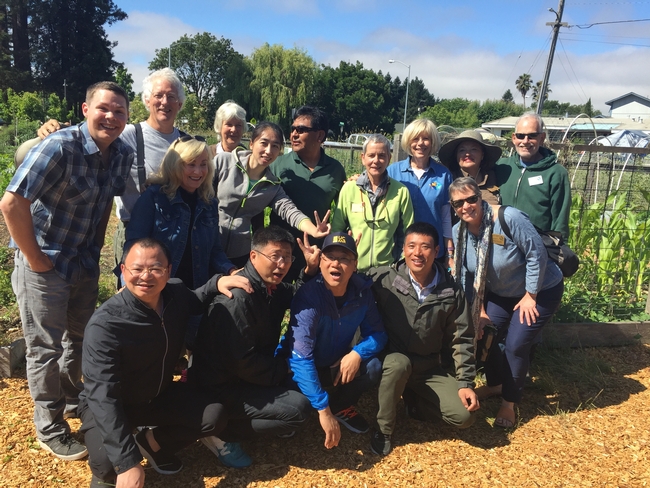
The whole crew at Bayer Farm
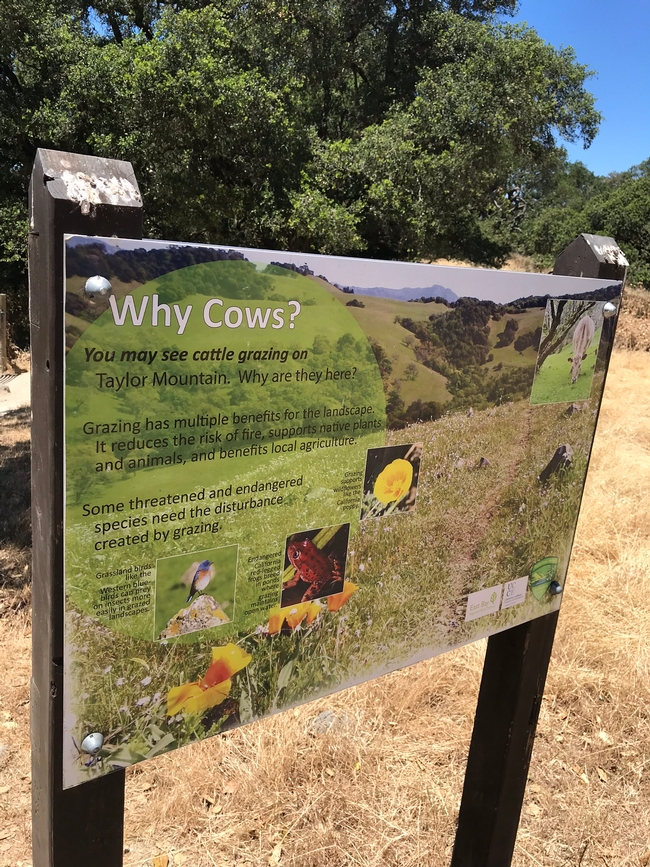
Grazing education panel "Why Cows" at Taylor Mountain Park
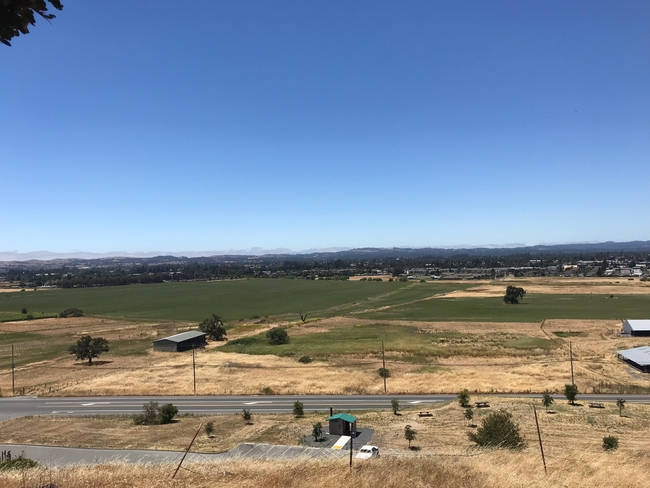
View west from Taylor Mountain. Pacific ocean is beyond the fog.
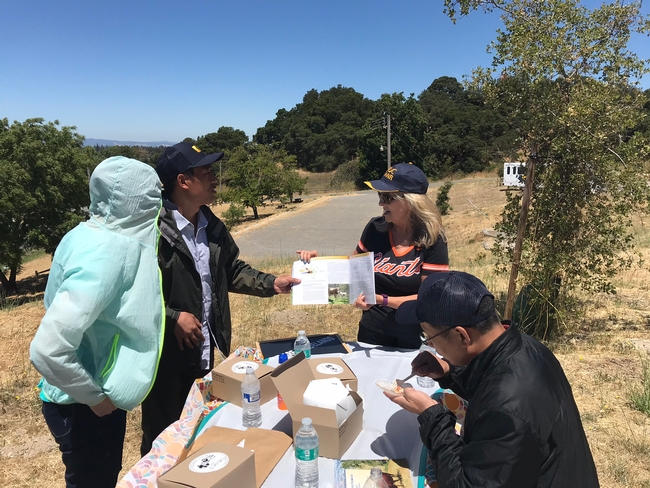
Dr Stephanie Larson presenting grazing handbooks to the delegates
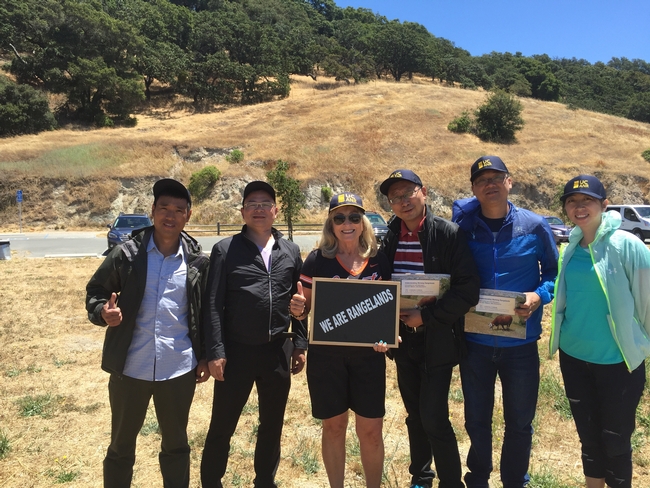
Delegates with Dr Stephanie Larson at Taylor Mountain, Sonoma County Regional Park